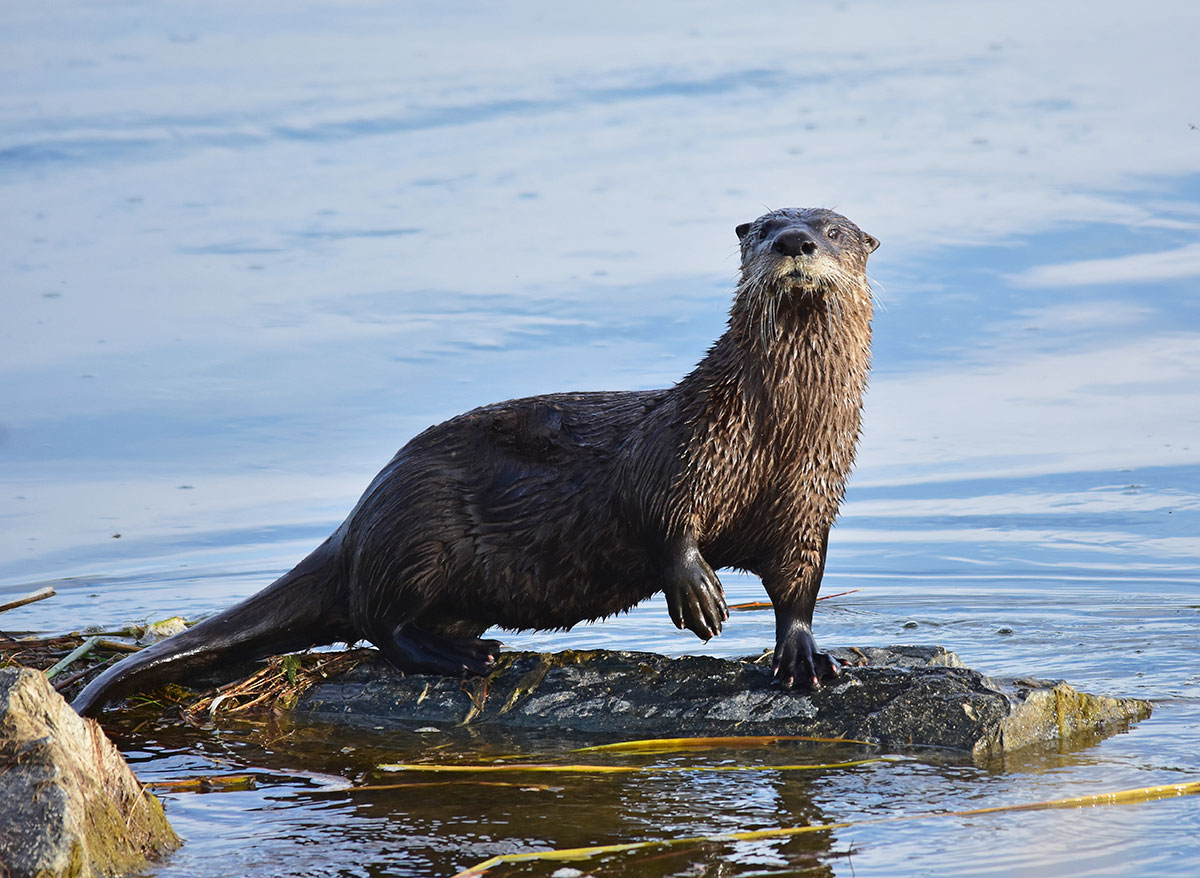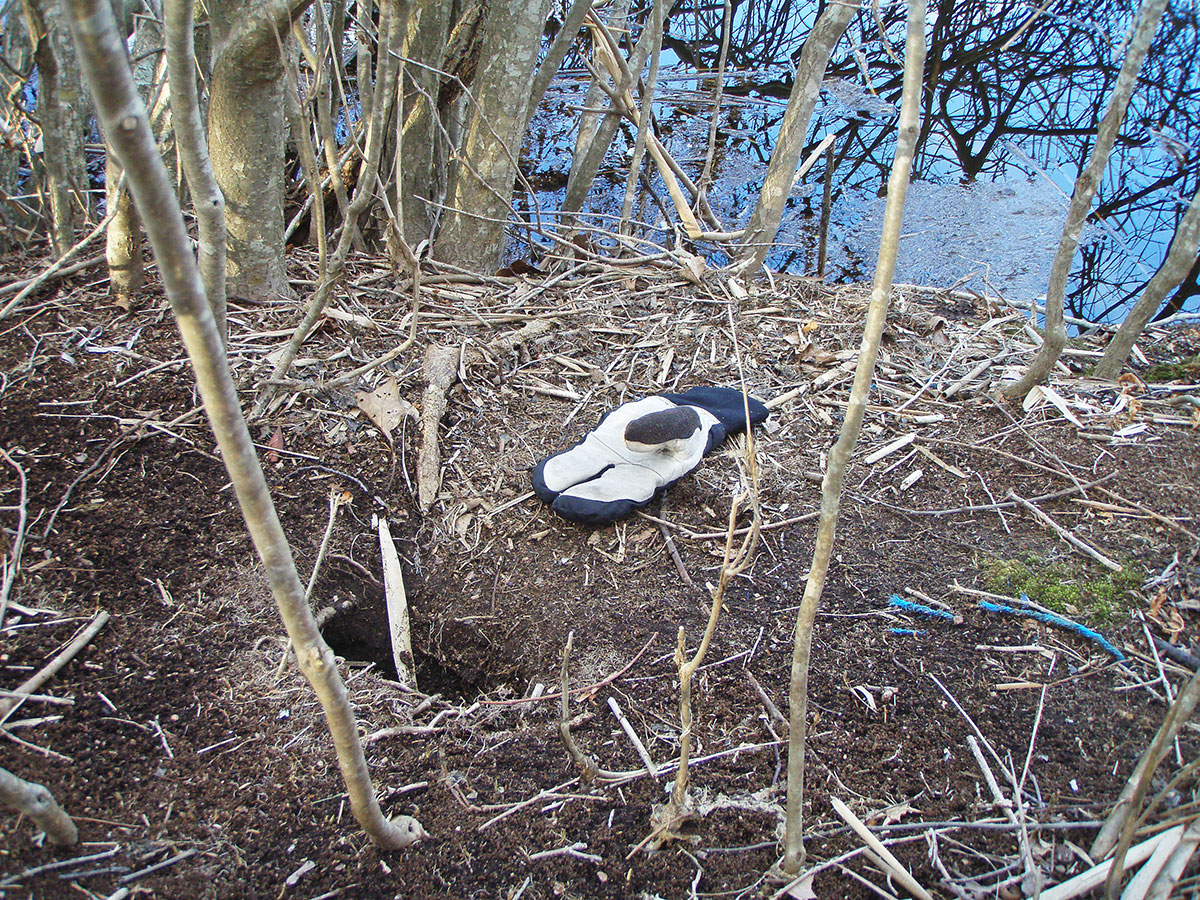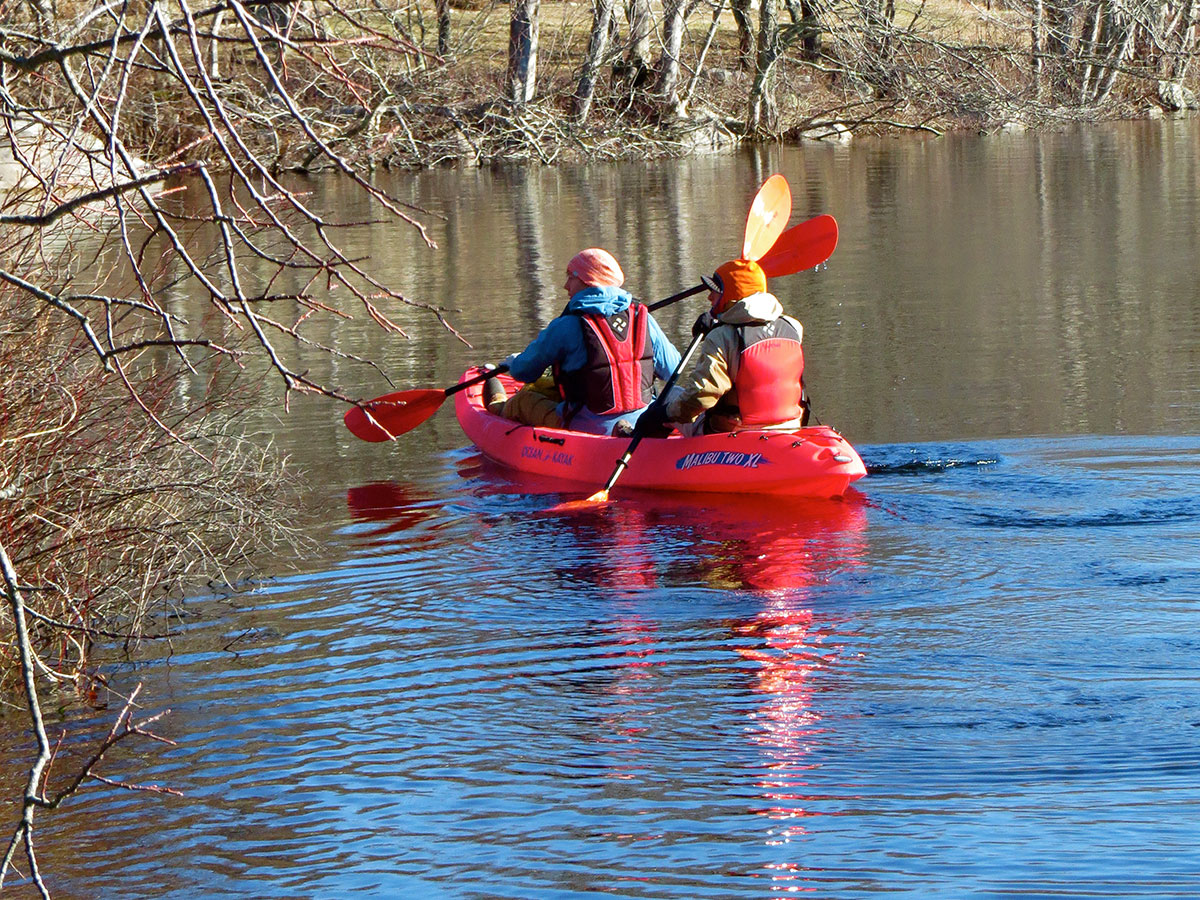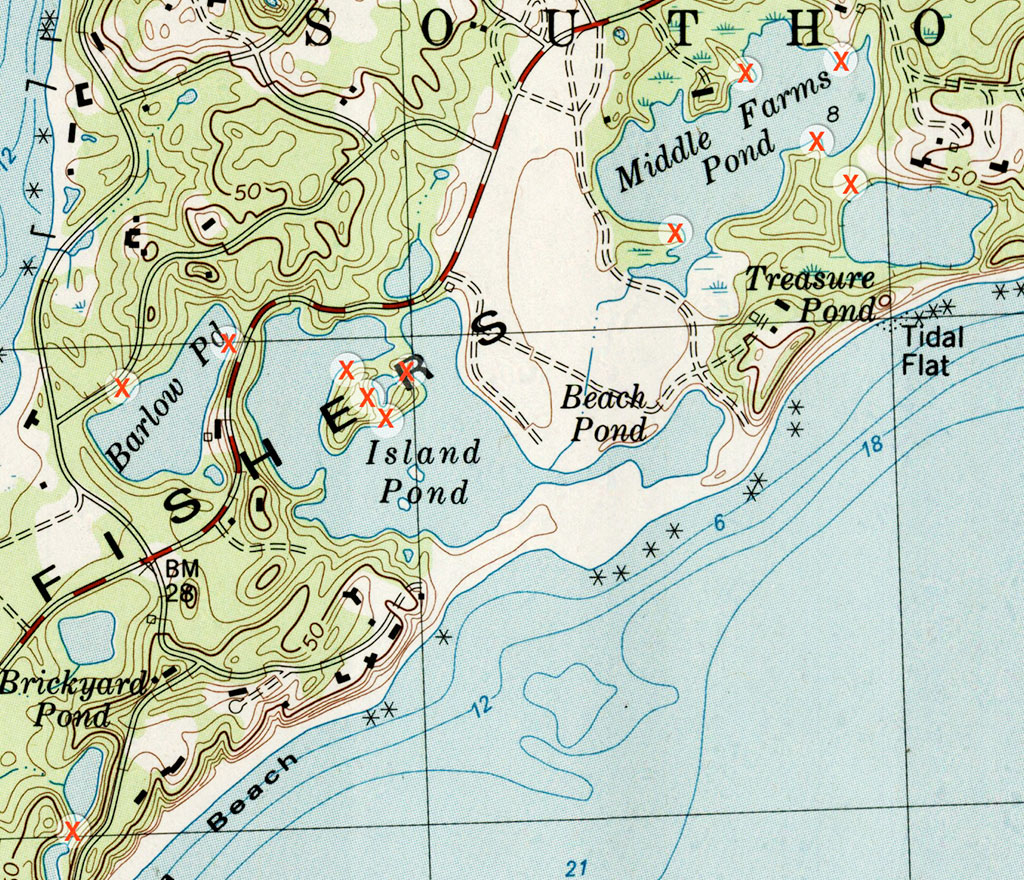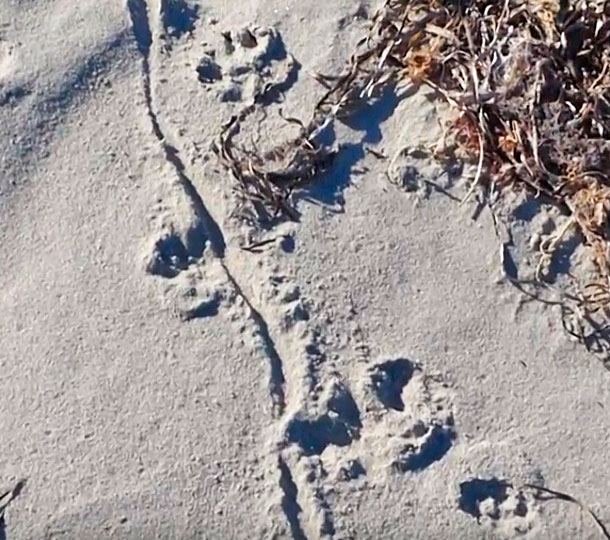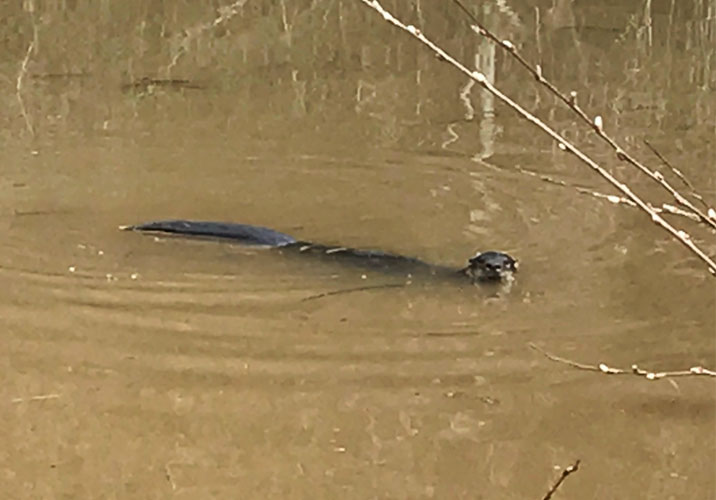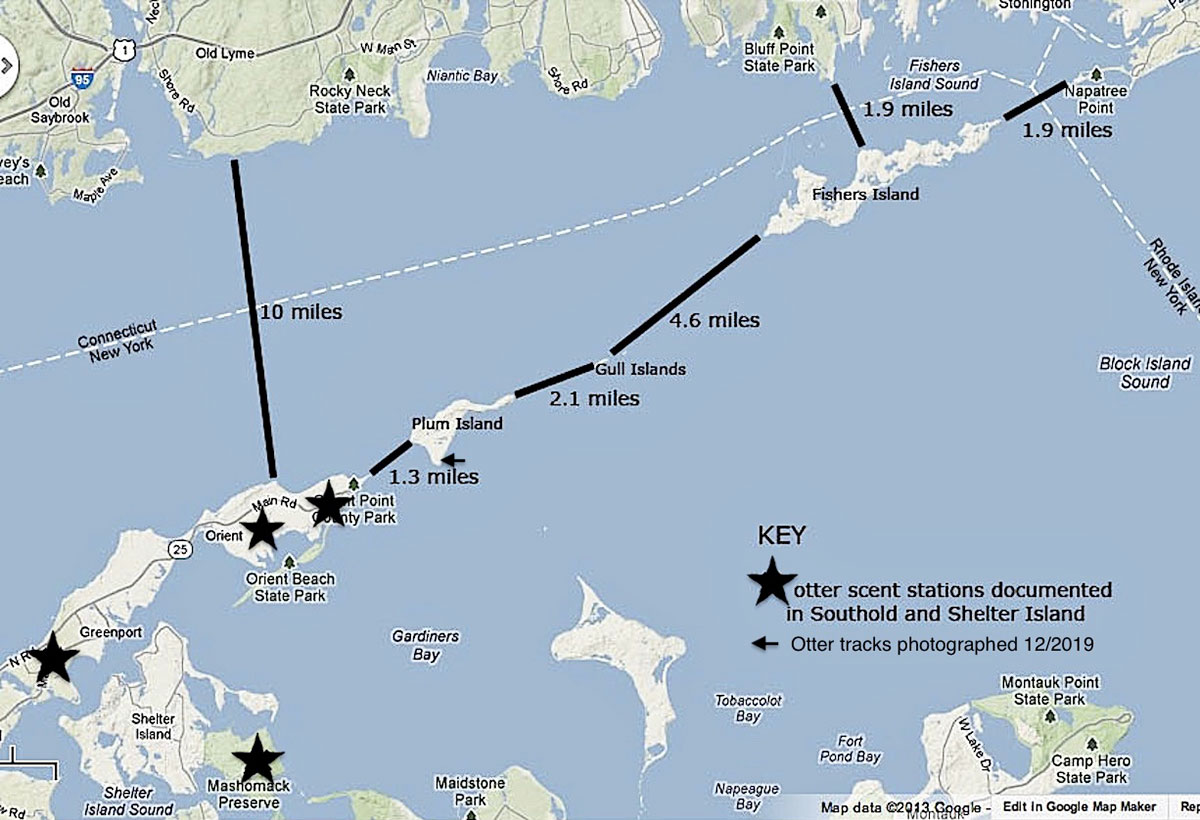ANNUAL EXHIBITION 2021
NORTH AMERICAN RIVER OTTER
North American River Otter (Lontra canadensis)
Photograph by Tom Koerner, USFWS
“Sleek and weasel-like, these carnivorous mammals have rich brown fur and grow to between three and four feet long…If you’re lucky enough to spot one, look for these telltale characteristics. River otters have the same general body shape as mink, but they are longer and heavier, weighing 16 to 26 pounds, At night, a river otter’s eyes shine a pale amber in the glow of a flashlight, while a mink’s eyes appear yellowish-green. Their tails are different, too; a mink’s tail is thin but bushy like a feral cat’s, while an otter’s is thick and oval at the base but flattens out and tapers to a rounded point. Finally, mink have pointed faces, while otters have broad muzzles.” Quote from North American River Otter (Lontra canadensis) by Terry McNamara, Nature Notes, HLFM Newsletter, Spring 2019.
Note: This photograph was not taken on Fishers Island.
North American River Otter den, Fishers Island
March 2013
Photograph by Mike Bottini
In 2013, wildlife biologist Mike Bottini conducted a survey of River Otters on Fishers Island that was funded by the Fishers Island Conservancy and the Baker Foundation. Field work found conclusive evidence — including scat, tracks, and scent mounds — that River Otters had established territories on Fishers Island. However, there was no photographic documentation showing the otters themselves.
River Otter field work, Middle Farms Pond
March 2013
Photograph by Mike Bottini
“Fifty-seven (57) sites were surveyed on Fishers Island by foot and kayak from March 21-23, 2013. Otter sign was noted at 24 sites, with scent stations (scat) found at 23 sites and otter tracks at one site. Two scent stations also had a den nearby.” Quote from River Otter (Lontra Canadensis) Survey of Fishers Island…” by Mike Bottini, June 2013.
Wildlife biologists Luanne Johnson (Biodiversity Works, Martha’s Vineyard) and Juliana Duryea (East Hampton Town Natural Resources) are seen here surveying Middle Farms Pond by kayak for signs of otter scent stations, sites where otters leave their scat and scent.
Otter scat, Island Pond
March 2013
Photo by Mike Bottini
Over time, otter scat dries out leaving the bones and scales of their favorite prey: fish. The scales can be examined under a microscope and identified to species. These tiny scales are most likely from dining on mummichog or striped killifish, two abundant and easily captured fish in the intertidal zone.
Map showing potential migration route of River Otters to Long Island from Connecticut and Rhode Island
Map courtesy of Mike Bottini
Mike Bottini’s 2013 survey posited that “it seems possible that juvenile otters dispersing from Fishers Island, coastal Rhode Island and eastern Connecticut natal sites could reach eastern Long Island by way of the Fishers Island – Plum Island archipelago. This same route to Long Island via Fishers Island is also thought to be used by beavers and coyotes.

